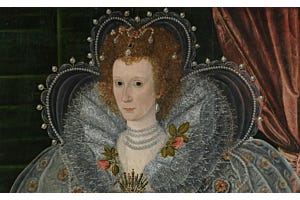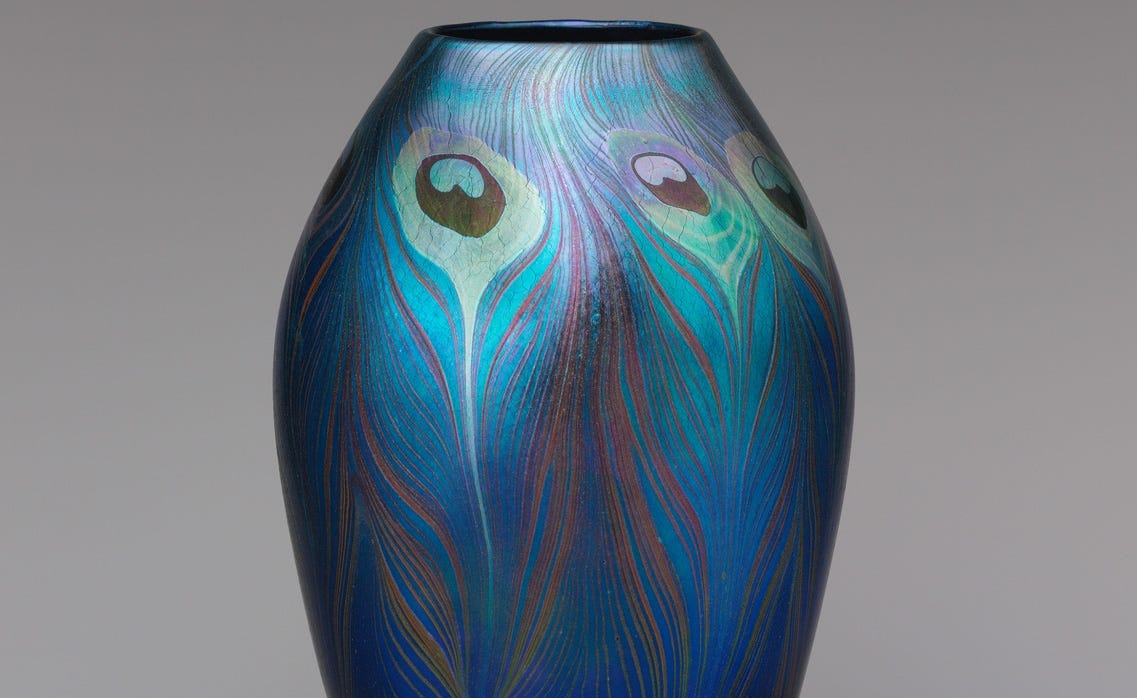
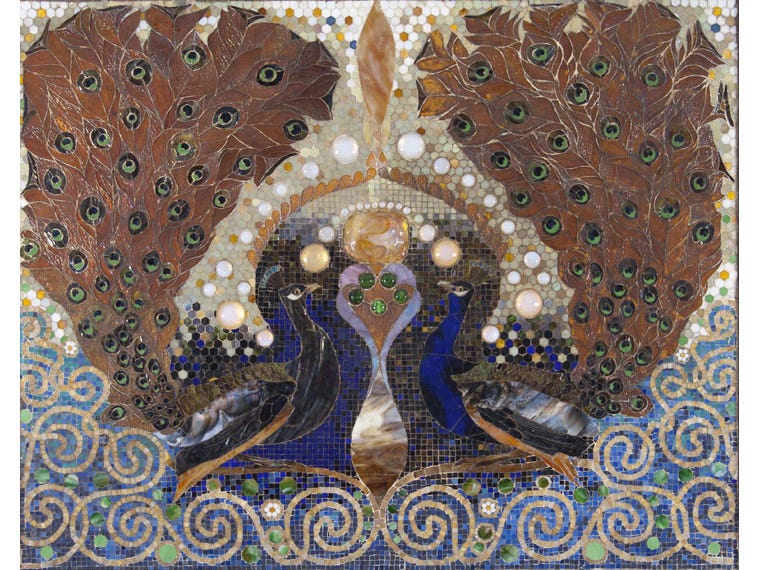
Peacock Mosaic, from the Entrance Hall of the Henry O. Havemeyer House, New York. Louis C. Tiffany (American, 1848–1933). Favrile glass, pottery, and plaster, 1890–91. University of Michigan Museum. University purchase 1930, transferred to the Museum of Art, 1986.146.9
The following year, the Tiffany Glass & Decorating Company produced an award-winning chapel for display at the 1893 World’s Columbian Exposition in Chicago. Behind the chapel’s altar stood a sumptuous, glittering wall (reredos) covered with glass mosaics decorated with two facing peacocks, which were apparently inspired by the Havemeyer pair. The chapel's birds are surrounded by a vine emblematic of the Eucharist. In this extraordinary, three-dimensional, multimedia chapel, Louis C. Tiffany combined his love of natural motifs and his innovative stained glass in service of spiritual uplift. According to Laurence J. Ruggiero, writing in The Tiffany Chapel at the Morse Museum, “It was reported at the time that visitors to the chapel were so affected by religious emotion that men doffed their hats in response.” This impressive tour de force was painstakingly reassembled in 1999, and is now on view at the Charles Hosmer Morse Museum in Winter Park, Florida. Peacocks also found their way into artful glass objects by the Gilded Age master. In March 1897, the New York Tribune reported: “There is now on exhibit at the Tiffany Studios, 333 Fourth Avenue, a remarkable collection of blown glass, the latest efforts of Louis C. Tiffany. The beauty and gorgeousness of the peacock suggested to his mind that he might obtain in Favrile glass similar color effects. After a series of experiments, he has succeeded in producing numbers of vases and plaques, where the color … and form … of the peacock has been carried out, not in a purely realistic manner, but with just enough realism … to bring to mind the brilliancy and color of its plumage. It happens that this peacock glass comes before the public at a most appropriate time [Easter], as the peacock was regarded by the primitive Christians as the symbol of the Resurrection.” Of the same exhibition, the Brooklyn Daily Eagle wrote: “It would seem as if Mr. Tiffany in this Peacock Favrile glass had reached the highest point in his art.”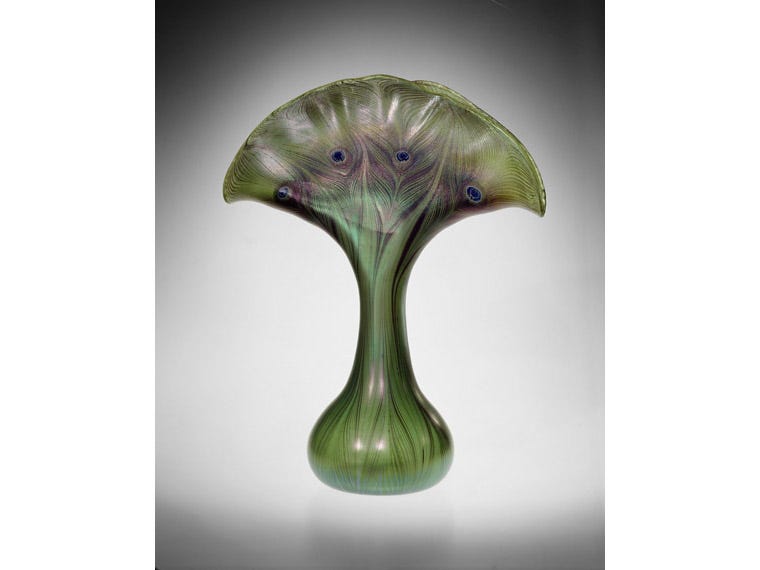
Vase. Designed by Louis Comfort Tiffany (American, 1848–1933). Tiffany Glass and Decorating Company (American, 1892–1902). Made in Queens, New York, United States. Favrile glass, 1893–96. Gift of H. O. Havemeyer, 1896 96.17.10
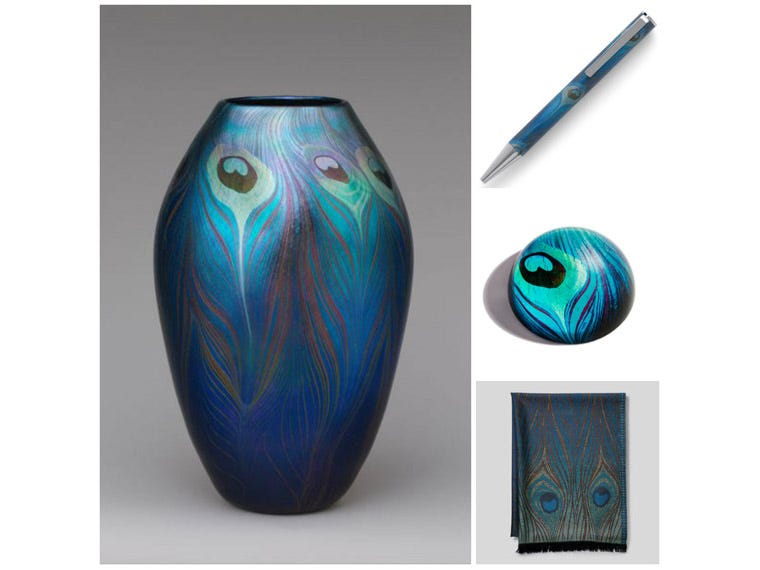
Left: Vase. Designed by Louis Comfort Tiffany (American, 1848–1933). Tiffany Glass and Decorating Company (American, 1892–1902). Made in New York, New York, United States. Favrile glass, ca. 1900. Gift of Louis Comfort Tiffany Foundation, 1951 51.121.2 Right, top to bottom: Louis C. Tiffany Favrile Pen, $38; Louis C. Tiffany Peacock Feather Paperweight, $22; Louis C. Tiffany Peacock Feather Shawl, $85
The peacock motif again took center stage on May 16, 1914, at Laurelton Hall, L.C. Tiffany’s grand country house in Oyster Bay, Long Island. Here, the wealthy designer invited a handpicked list of notables from New York society to a so-called “Peacock Feast,” in which stuffed peacocks were paraded on platters before the astonished guests, who then dined on “peafowl, frog legs, and turtle truffles,” according to contemporary accounts.
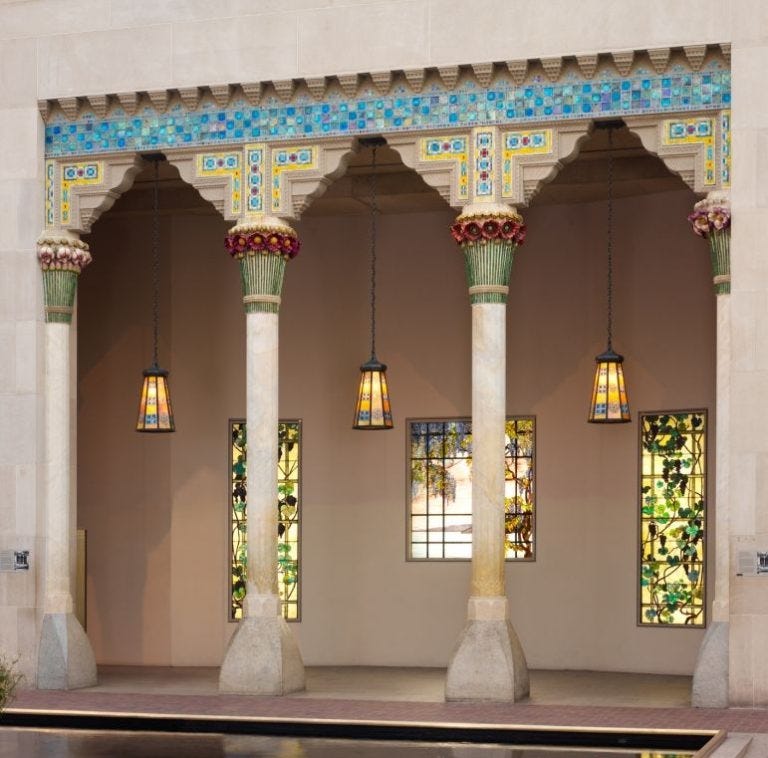
Architectural Elements from Laurelton Hall, Oyster Bay, New York. Designed by Louis Comfort Tiffany (American, 1848–1933). Made in Oyster Bay, New York, United States. Limestone, ceramic, and Favrile glass; ca. 1905. Gift of Jeannette Genius McKean and Hugh Ferguson McKean, in memory of Charles Hosmer Morse, 1978 1978.10.1
The great estate—which the New York Times once reported “contained 82 rooms, 25 baths and a fountain in an interior courtyard”—was consumed by fire in 1957, but The Met is fortunate to display Laurelton Hall’s original ceramic loge and columns in the American Wing (above).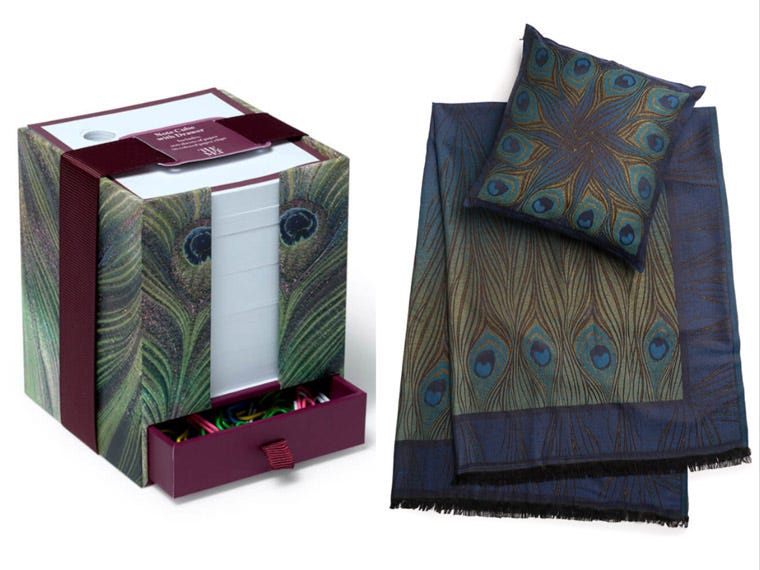
Left: Louis C. Tiffany Favrile Note Cube, Peacock, $15. Right: Louis C. Tiffany Peacock Feather Throw & Pillow Cover Set, $110
The peacock lives on in our range of inspired designs based on the work of L. C. Tiffany, whose February 18 birthday we celebrate today. Items pictured above, and many more, are available at The Met Store.





